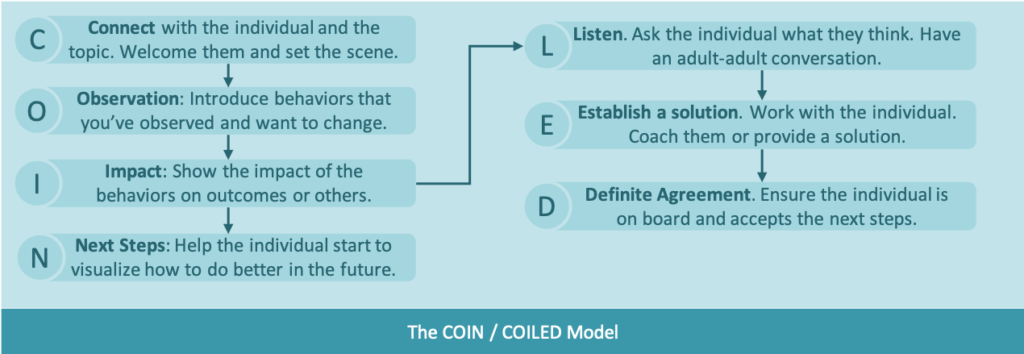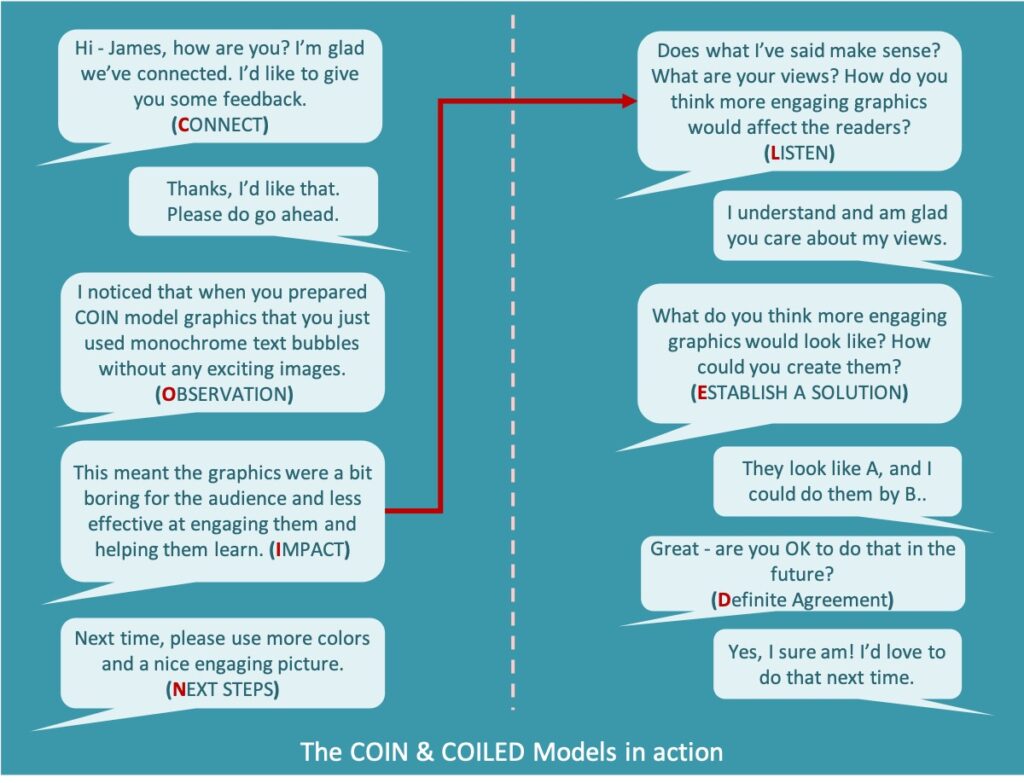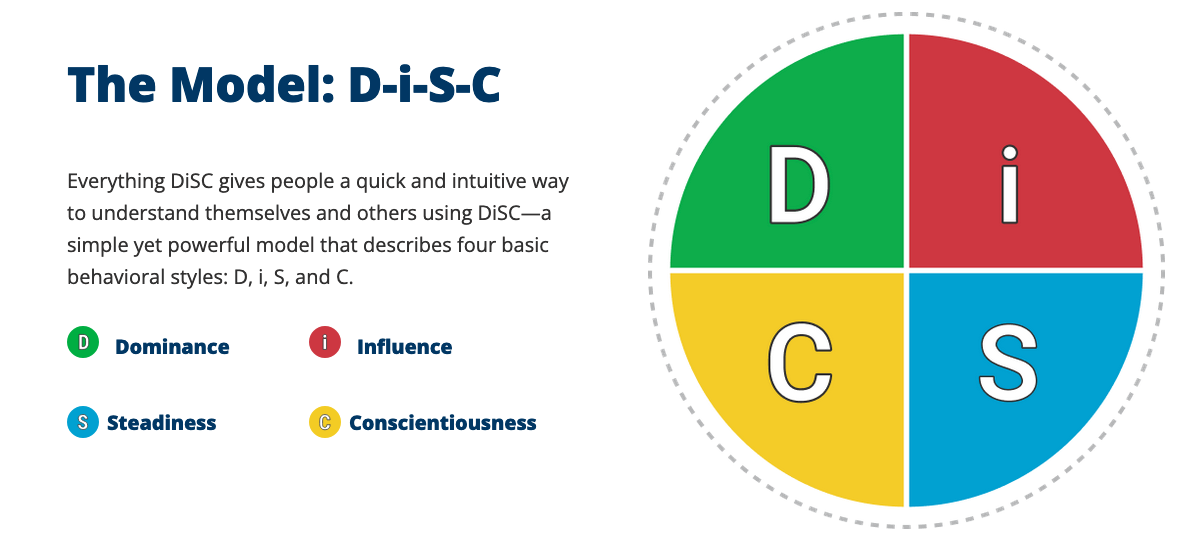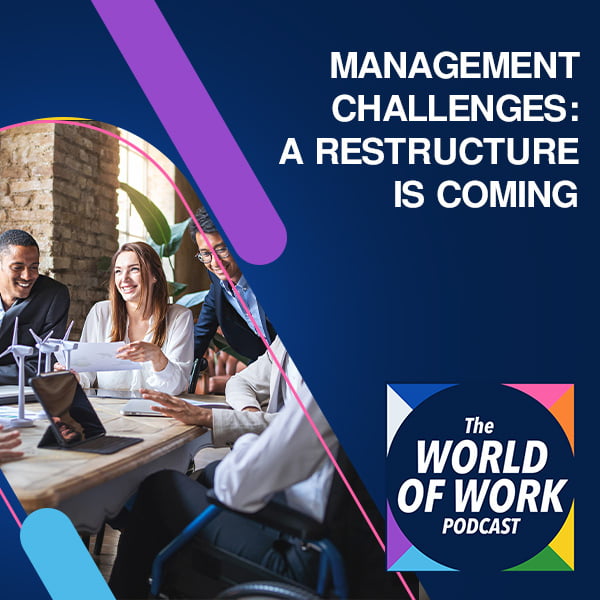The COIN feedback model and the COILED model are structured approaches to providing feedback. They both start with Connection, sharing an Observation and explaining its Impact. The COIN model moves on to the Next Step, while the COILED then Listens, Establishes a Solution and then ensures Definite agreement.
Summary by The World of Work Project
The COIN Feedback Model and the COILED Feedback Model

The COIN feedback model is a four stage method for delivering individual feedback. The model helps those delivering feedback to design their messages and also gives them a best-practice process to use when delivering that feedback. The stages are: Conversation, Observation, Impact and Next steps, COIN.
There is also an add-on to the COIN model, which transforms it into the COILED model, by adding a few extra stages that make it more egalitarian or ”adult-adult”. The stages of the COILED model are: Conversation, Observation, Impact, Listen, Establish Solution, Definite Agreement.
The COIN Feedback Model
Connection
Start the feedback process by opening the conversation with the individual and connecting with them in relation to the topic you’ll be providing feedback on. This is about setting the scene and getting them into the right frame of mind to think about the situation and actions that you’re delivering feedback about.
Observation
The second stage of The COIN Feedback Model is “observation”.
Having established the connection to the topic, the next step is to introduce the actions or behaviors that you want to provide feedback about. These should be specific things that you have personally observed. They should be factual and devoid of emotive language.
Impact
After you’ve shared your observations, you need to show the impact of the actions or behaviors that you observed . This is the “so what” part of the conversation and it’s a key stage in helping someone understand why and how their actions or behaviors affected others. This understanding is essential if they are to change their behaviors in the future.
Next steps
The last stage of The COIN Feedback Model is “next steps”.
Having demonstrated the impact of actions or behaviors, you need to help the individual prepare to change them. They need to think through and visualize how they should have acted, and what they might do differently in the future to prevent these impacts occurring again.
The COILED model – Expanding The COIN Feedback Model
The COILED model is very similar to the COIN feedback model, simply building on it in an effort to make it more “adult-adult”. The first three stages of the COILED model are exactly the same as those of the COIN model: Connection, Observation and Impact. However the remainder of the model is slightly different:
Listen
In this modified stage it’s important to treat the person you’re providing feedback to in a respectful way, like an adult. You should ask them to reflect on the situation and trust them to do so in a mature way. As they do, you should listen actively to them.
Establish Solution
Having understood their view of the situation, it’s time to think about the next steps and identify a solution. This could involve you proposing a solution, or asking them for their views on a solution.
Definite Agreement
This last stage of this process is to ask the person you’re providing feedback to to acknowledge the conversation and the next steps. They should own them and be clear that they own them. If they don’t, then the feedback conversation hasn’t really worked.

Learning More
Those of you who have spoken to us will know we have pretty strong views on feedback. We understand that receiving feedback well can be difficult and that feedback can feel like a social threat. We also know that receiving feedback can be triggering, causing our amygdala responses (fight or flight) to kick in. Given this, we think it’s good to focus on learning to receive feedback well before focusing on giving feedback well.
There are several posts in this site on various feedback tools and models which might be helpful. These include 360 degree feedback, the stop, start continue framework, the Feedback Review Matrix and the CEDAR model. There are also some tools we think you should avoid, including the feedback sandwich.
A podcast on feedback might also be helpful. There’s one below:
The World of Work Project View
Feedback is difficult to deliver, but these models help. We appreciate the simplicity of the COIN feedback model and think it is useful in some situations. We prefer though the COILED model as it is more respectful to the individual receiving the feedback and gives them a voice in the conversation.
As we’ve said before, the best way to give feedback well is to do so with good intentions and a genuine desire to help the person that you’re providing feedback to develop and improve. In many ways this is more important than whatever model you end up using.
We’ve also said elsewhere that being good at receiving feedback should be the first stage of development in giving others feedback. If you can’t receive feedback well, you probably won’t be able to give it well either.
How We Help Organizations
We provide leadership development programmes and consulting services to clients around the world to help them become high performing organizations that are great places to work. We receive great feedback, build meaningful and lasting relationships and provide reduced cost services where price is a barrier.
Learning more about who we are and what we do it easy: To hear from us, please join our mailing list. To ask about how we can help you or your organization, please contact us. To explore topics we care about, listen to our podcast. To attend a free seminar, please check out our eventbrite page.
We’re also considering creating a community for people interested in improving the world of work. If you’d like to be part of it, please contact us.
Sources and Feedback
This post on The COIN Feedback Model is based on our own personal experience and various conversations and discussions we’ve had about feedback. Though there are many references to this model on the internet, we have no specific references for it. If you know who it should be attributed to, please let us know.
We’re a small organization who know we make mistakes and want to improve them. Please contact us with any feedback you have on this post. We’ll usually reply within 72 hours.






